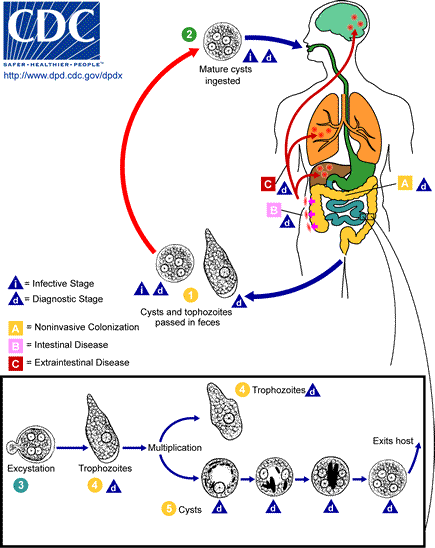Fájl:Entamoeba histolytica Amebiasis LifeCycle.gif
Entamoeba_histolytica_Amebiasis_LifeCycle.gif (435 × 548 képpont, fájlméret: 28 KB, MIME-típus: image/gif, 0,2 s)
Fájltörténet
Kattints egy időpontra, hogy a fájl akkori állapotát láthasd.
| Dátum/idő | Bélyegkép | Felbontás | Feltöltő | Megjegyzés | |
|---|---|---|---|---|---|
| aktuális | 2006. április 29., 16:26 |  | 435 × 548 (28 KB) | Patho | {{Information| |Description= Amebiasis [Entamoeba histolytica] Life Cycle of Entamoeba histolytica Cysts and trophozoites are passed in feces . Cysts are typically found in formed stool, whereas trophozoites are typically found in diarrheal stool. |
Fájlhasználat
Az alábbi lap használja ezt a fájlt:
Globális fájlhasználat
A következő wikik használják ezt a fájlt:
- Használata itt: cs.wikipedia.org
- Használata itt: da.wikipedia.org
- Használata itt: de.wikibooks.org
- Használata itt: he.wikipedia.org
- Használata itt: id.wikipedia.org
- Használata itt: pt.wikipedia.org
- Használata itt: sv.wikipedia.org


